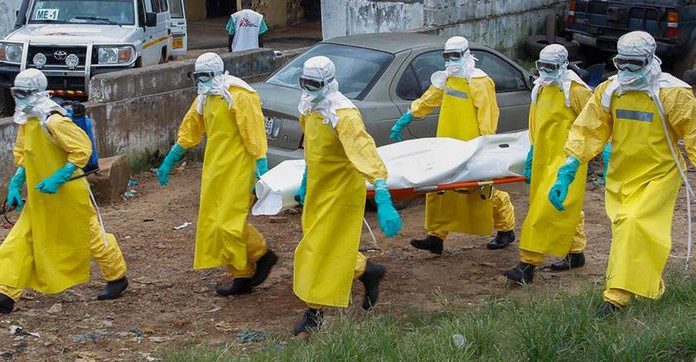
The three West African countries at the heart of the Ebola outbreak have made great strides to stem the spread of the deadly virus but missed key January 1 targets towards halting the epidemic, the World Health Organization said this week.
The United Nations set a 90-day target on October 1 to isolate and treat 100 percent of Ebola patients in Guinea, Sierra Leone and Liberia, and to ensure safe burials for all bodies, which are highly infectious.
The WHO acknowledged in its latest situation report that the goals had not been met by the set deadline, but stressed that “efforts to attain each target will continue until the epidemic has been brought to an end.”
Meeting the treatment and burial targets, and meticulously tracing people who have been in contact with Ebola patients, are seen as essential to controlling the epidemic, which has infected 21,086 people in just over a year, of whom 8,289 have died.
The WHO has struggled to meet those targets, falling short of its first deadline of having 70 percent of Ebola patients under treatment and 70 percent of Ebola victims safely buried by Dec. 1. At the time, WHO officials cited intense transmission in western Sierra Leone — particularly in and around the capital, Freetown — and ongoing flareups in rural parts of Guinea and Sierra Leone as among the greatest challenges.
Scaled-up treatment capacity
The three hardest-hit countries, which account for all but 15 of the total deaths, have dramatically scaled up the number of beds available in Ebola treatment centers over the past 90 days, and now at least have the capacity to isolate and treat all patients, the WHO said.
In Liberia, which was long the hardest-hit country and still counts the most deaths at 3,496, a steep drop in transmission paired with a rapid scale-up in treatment means the country now counts 15.1 beds for every confirmed and probable case of the virus. In Guinea, where the epidemic began in December 2013 and which has confirmed 1,781 Ebola deaths, there are 2.1 available beds for each infected person. And in Sierra Leone, which currently has the most infections – 9,780 – of whom 2,943 have died, there are 4.6 beds for each patient, WHO said.
But “the uneven geographical distribution of beds and cases, and the under-reporting of cases, means that the UNMEER (UN Mission for Ebola Emergency Response) target of isolating and treating 100 percent of (Ebola) cases is still not met in some areas,” the UN health agency said.
In Guinea, for instance, the virus has continued to spread to geographically but almost all of the country’s treatment centers are based in the capital, WHO said. “An increasing emphasis will be put on the rapid deployment of smaller treatment facilities to ensure that capacity is matched with demand in each area,” it added.
Ebola deaths under-reported
The UN agency meanwhile found that all three countries now have the capacity to ensure safe burials for all people known to have died from Ebola. But it warned that “the under-reporting of deaths means that the UNMEER target of 100 percent safe burial was not met.”
WHO has acknowledged that the true number of Ebola deaths is likely far higher than the recorded figures, given that many deaths go unreported.
Spike in infections among healthcare workers
The UN agency also reported a significant jump in the number of infected healthcare workers: as of January 4, 838 healthcare workers had been infected and 495 of them had died.
Just a week earlier, the tally stood at 678 cases and 382 deaths, but WHO stressed the hike was mainly due to previously unreported cases in Sierra Leone and not to a surge in new infections.
